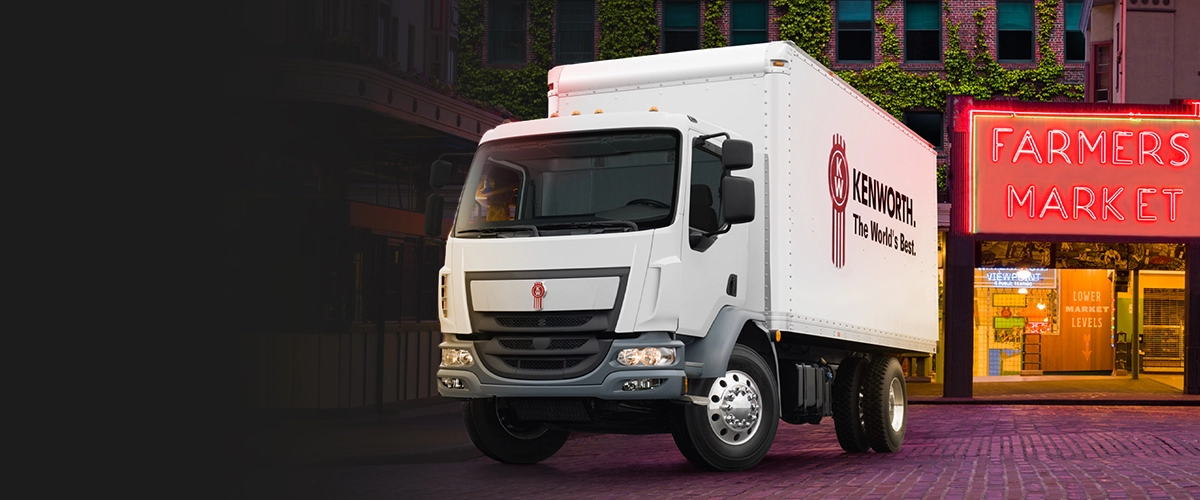Utilizing the Kenworth K270 Specs to Make an Informed Purchase
February 04, 2025 - 8:44:7 am

The Kenworth K270 is a versatile medium-duty truck designed for a variety of applications, from local deliveries to regional hauling. Understanding the Kenworth K270 specs is crucial for making an informed purchase that aligns perfectly with your business needs. This article will delve into the key specifications and how they translate into real-world performance, empowering you to choose the right K270 configuration for your operations.
Understanding Your Operational Needs:
Before diving into the Kenworth K270 specs, it's essential to define your operational requirements. Ask yourself these key questions:
- What type of cargo will I be hauling? (e.g., dry goods, refrigerated goods, construction materials)
- What is the typical weight of my loads? (This will determine the necessary payload capacity and GVWR.)
- What are my typical delivery routes? (e.g., city driving, highway driving, a mix of both)
- What are my fuel efficiency goals? (Consider the balance between power and fuel economy.)
- What is my budget for the purchase? (Factor in not just the initial price, but also long-term operating costs.)
Analyzing the Kenworth K270 Specs:
Now, let's explore the key specifications that will influence your K270 purchase decision:
1. Engine Options:
The Kenworth K270 typically offers a selection of engines designed for medium-duty applications. Understanding the engine options is vital:
- PACCAR PX-7: This engine is a popular choice for medium-duty trucks, known for its balance of power and fuel efficiency. Pay close attention to the horsepower and torque ratings within the PX-7 range to match your hauling needs.
- Consider Fuel Type: While diesel engines are common in medium-duty trucks, explore if alternative fuel options are available or suitable for your area and operations.
2. Gross Vehicle Weight Rating (GVWR):
The GVWR is the maximum permissible weight of the truck and its cargo. It's crucial to select a K270 with a GVWR that meets or exceeds your anticipated load weight. Exceeding the GVWR can lead to safety hazards, vehicle damage, and legal penalties.
3. Axle Configurations and Ratings:
- Front Axle Weight Rating (FAWR): This specifies the maximum weight the front axle can support.
- Rear Axle Weight Rating (RAWR): This indicates the maximum weight the rear axle can handle.
The combination of FAWR and RAWR, along with the chassis design, contributes to the overall GVWR. Consider the weight distribution of your typical loads when evaluating axle ratings.
4. Transmission Options:
- Automatic Transmissions: These are often preferred for city driving and applications requiring frequent stops and starts. They offer ease of operation and can contribute to reduced driver fatigue.
- Automated Manual Transmissions (AMTs): These transmissions offer a blend of manual and automatic functionality, often providing better fuel efficiency than traditional automatics while still offering some ease of use.
5. Cab and Chassis Configurations:
- Cab Options: The K270 might be available in day cab or other cab configurations. Choose the cab that best suits your driver needs and route requirements.
- Chassis Options: Different chassis configurations are available for various body applications. Consider the type of body you will need (e.g., dry van, flatbed, refrigerated) when selecting the chassis.
6. Frame and Suspension:
- Frame Rails: The strength and configuration of the frame rails are essential for supporting the load and body.
- Suspension System: The suspension system impacts ride quality and handling. Consider the terrain you'll be driving on and the sensitivity of your cargo when evaluating suspension options.
7. Brakes and Tires:
- Brake System: A reliable and efficient brake system is paramount for safety. Ensure the K270 you choose has adequate braking capacity for your typical loads.
- Tire Size and Type: Tire selection affects load capacity, fuel efficiency, and handling. Consider the terrain and weather conditions you'll encounter when choosing tires.
8. Fuel Tank Capacity:
Fuel tank capacity directly impacts the truck's range. Consider your typical route lengths and refueling frequency when evaluating fuel tank size.
Working with Wallwork Truck Center:
Navigating the Kenworth K270 specs and configurations can be complex. Wallwork Truck Center's experienced sales team is here to guide you through the process. We can help you:
- Analyze your operational needs: We'll work with you to understand your specific requirements and recommend the ideal K270 configuration.
- Explain the specs in detail: We'll break down the technical jargon and explain how each specification impacts real-world performance.
- Explore available options and packages: We can help you customize your K270 with the right features and options to maximize its versatility and efficiency.
- Arrange a test drive: Experience the K270 firsthand to get a feel for its performance and handling.
By carefully considering the Kenworth K270 specs and partnering with Wallwork Truck Center, you can make an informed purchase that sets your business up for success. Visit us today to explore the K270 and discover the perfect truck for your needs.

